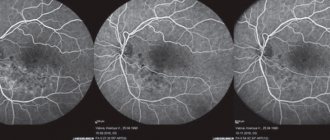The name of this disease is of ancient Greek origin. The root "akros" means limb, and "megas" means big. Acromegaly, known to mankind since antiquity, is characterized by enlargement of the feet and hands and enlargement of facial features. The reasons why this happens are also known: the disease is provoked by a pituitary adenoma that produces excessive secretion of growth hormone, as well as non-pituitary tumors that produce a factor that releases this hormone.
At the Nizhny Novgorod clinic "Alfa Health Center", the disease can be diagnosed during an examination by an endocrinologist. Sometimes, in the presence of characteristic symptoms, it is identified during the comprehensive program “Life without headaches”: pain syndrome with acromegaly is not uncommon.
Causes
This severe neuroendocrine disease is caused by overproduction of somatotropin, or growth hormone. Often the root cause of the pathological process is a benign neoplasm that produces somatotropic hormone in isolation. Regular traumatic brain injuries, chronic sinusitis and a tumor of the hypothalamus can provoke the appearance of a tumor. There are known cases of genetic inheritance of the disease. Often with acromegaly, the tumor increases the production of not only growth hormone, but also prolactin.
The vast majority of known cases of the disease are associated with pituitary adenoma or growth hormone secretion. But data have also been recorded on the development of acromegaly under the influence of ectopic secretion of a hormone that releases growth hormone, which is already responsible for pituitary hyperplasia.
Folk remedies
Acromegaly is caused by a tumor that changes the level of hormones in the body. Folk remedies cannot affect the development, progression and activity of the tumor, so they are not used in practice. Attempts to refuse the help of official medicine and treat pituitary adenoma using traditional recipes can lead to a deterioration in the patient’s condition and the development of serious complications.
The information is for reference only and is not a guide to action. Do not self-medicate. At the first symptoms of the disease, consult a doctor.
SEARCH FOR TREATMENT AROUND THE WORLD WITH YELLMED
Symptoms
The prevalence of acromegaly in European countries is estimated at approximately one case in 100-250 thousand. According to medical reports, the diagnosis is most often made in patients in the middle age group. Among women and men over 40 years of age, the prevalence of acromegaly is approximately the same. Due to the fact that it develops gradually and progresses slowly, the disease is most often detected 4-10 years after the onset of development.
Active production of growth hormone leads to increased production of somatomedins: these are the names of growth factors, among which the most important role is played by somatomedin C, or insulin growth factor. It is produced in the liver. In addition, acromegaly is accompanied by the production of growth factors of various organs - cartilage, bone and others. Sometimes, if the disease began in adolescence, lengthening of the skeletal bones is possible. This clinical syndrome in acromegaly is called gigantism.
Patients with acromegaly are characterized by a gross change in appearance. They enlarge:
- language;
- lips;
- brow ridges;
- nose.
Pathological folding and thickening of the skin is observed. Diastema develops - the gap between the teeth increases. Prognathism is not uncommon - one of the types of facial profiling, which involves the protrusion of the lower jaw forward. The hands and feet increase in size.
With acromegaly, the voice becomes rougher. This occurs due to thickening of the vocal cords. Another reason for voice changes is the expansion of paranasal cavities.
Patients with acromegaly may complain of pain in the spine and joints. They can be caused by the development of arthropathy and their destabilization. In the area of natural folds, hyperpigmentation of the skin and villous-warty growths are observed, and in women, increased growth of body hair according to the male pattern is possible - a syndrome also called hirsutism.
Acromegaly is often accompanied by an enlargement of the thyroid gland and the appearance of nodules. The patient may also develop other diseases of the endocrine system, such as insulin-resistant diabetes mellitus. Cardiovascular pathologies caused by acromegaly - high blood pressure, cardiomegaly, microcardiodystrophy - pose a great danger. The latter is characterized by the fact that it can cause coronary insufficiency and, as a consequence, death.
Damage to the respiratory system in acromegaly is manifested by obstructive sleep apnea. The syndrome is associated with a pathological increase in the size of the epiglottis and tongue. Also, in a patient with acromegaly, the incidence of restrictive pulmonary diseases that are associated with changes in the spine (kyphoscoliosis) increases. There may be decreased sensitivity in the fingers. The symptom is explained by compression of the nerve due to changes in the soft tissues in the wrist area. Acromegaly is also characterized by signs of general malaise - decreased ability to work, causeless weakness and fatigue.
As the tumor grows in size, it puts pressure on healthy pituitary cells. The consequence of this is a disruption of the normal functioning of the organ. In this case, acromegaly is the cause of reproductive and sexual dysfunction, which manifests itself:
- menstrual irregularities and female infertility;
- decreased potency and libido in men;
- various neurological symptoms;
- the appearance of headaches, poorly relieved by analgesics, sometimes simultaneously with the appearance of photophobia and lacrimation.
Complications
Acromegaly, as it progresses, can cause high blood pressure and the development of arterial hypertension. Complications of the disease in the form of cardiomyopathy (an increase in the size of the heart muscle) and other disorders of the cardiovascular system are common. Patients with acromegaly often have diabetes mellitus, osteoarthritis, and thyroid pathologies.
Other possible complications include:
- colon polyps;
- loss or deterioration of vision;
- spinal cord compression;
- hypopituitarism - decreased secretion of pituitary hormones.
Patients with acromegaly often develop sleep apnea, a condition in which breathing stops for short periods during sleep. For women, the risk of developing a benign uterine tumor - fibroids - increases. When acromegaly is treated early, the severity or likelihood of all of these complications decreasing.
Consequences
The danger of acromegaly lies in its complications, which are observed in almost all internal organs. Frequent complications:
- nervous disorders;
- pathologies of the endocrine system;
- mastopathy;
- uterine fibroids;
- polycystic ovary syndrome;
- intestinal polyps
- ischemic disease;
- heart failure;
- arterial hypertension.
As for the skin, the following processes occur:
- roughening of skin folds;
- warts;
- seborrhea;
- increased sweating;
- hidradenitis
Impaired visual and auditory functions characteristic of this pathology can cause complete deafness and blindness of the patient. Moreover, these changes will be irreversible!
Acromegaly greatly increases the risk of developing malignant neoplasms, as well as various pathologies of internal organs. Another life-threatening complication of acromegaly is respiratory arrest syndrome, which mainly occurs during sleep.
That is why a patient who wants to save his life, when the first signs indicating acromegaly appear, should seek professional help from a qualified specialist - an endocrinologist!
Danger of disease
If acromegaly is not treated promptly, it can lead to severe complications and death. Approximately half of patients die before the age of 50 years. Moreover, the overwhelming number of deaths with acromegaly (60%) are associated with cardiovascular complications. Another quarter consists of pulmonary-respiratory complications and 15% - the development of oncological processes, most often of the digestive system.
The danger of acromegaly is that it often goes unrecognized. The rarity of this disease, as well as the gradual development of changes in appearance over a long period, do not cause suspicion in the patient. Delayed diagnosis and treatment of acromegaly increases the risk of complications. With timely consultation with a doctor, on the contrary, it is possible to significantly reduce the external manifestations of pathology and side effects.
Forecast
Acromegaly in the absence of therapy is characterized by a progressive course with the development of organ disorders, early disability and premature death (mortality compared to the general population indicator is 2-2.5 times higher; without treatment, patients die 10 years earlier than healthy people). The younger the patient is at the time of the onset of the disease, the more aggressive growth the tumor is characterized by and the higher its functional activity. When it debuts at the age of over 50 years, the tumor grows more slowly and has less hormone-producing activity.
Stages
There are 4 stages of acromegaly:
- preacromegaly;
- hypertrophic;
- tumor;
- cachectic.
The first stage is diagnosed extremely rarely due to the mild severity of the symptoms characteristic of acromegaly.
At the hypertrophic stage, acromegaly can be recognized by the enlargement of individual organs, changes in facial contours and protrusion of the lower jaw. Characteristic features at this stage include deepening of the voice, increased body weight, and visual impairment. There are frequent cases of increased sweating due to the fact that the sweat glands also increase in size. General weakness and headaches are also included in the clinical picture of hypertrophic acromegaly.
At the tumor stage, the patient develops increased intracranial pressure. The consequence of this may be severe headaches, decreased hearing and vision. The tumor stage of acromegaly is often accompanied by muscle atrophy and weakness.
The outcome of the disease is considered to be the cachectic stage. This is complete exhaustion that develops in the absence of therapy.
Prevention
In order to prevent the development of acromegaly, doctors advise adhering to the following recommendations.
- avoid traumatic head injuries;
- promptly treat infectious diseases;
- consult a doctor if there are metabolic disorders;
- carefully treat diseases affecting the respiratory system;
- periodically take tests for somatotropin levels for preventive purposes.
Acromegaly is a rare and dangerous disease that is fraught with a number of complications. However, timely diagnosis and competent, adequate treatment allows us to achieve stable remission and return the patient to a full, normal life!
Diagnostics
To diagnose acromegaly, the patient is prescribed an oral glucose tolerance test. The diagnosis is confirmed by a biochemically increased concentration of growth hormone in the blood serum. When diagnosing acromegaly, the doctor also takes into account the level of insulin-like growth factor.
Imaging studies are usually sufficient to assess the size and extent of tumor spread. The clinical consequences of acromegaly are determined through echocardiography and analysis of sleep apnea attacks.
Famous people with acromegaly
In chronological order
- Rondo Hatton (1894–1946) was an American soldier, journalist, and film actor. Most likely (though not certain) the impetus for the disease was given by mustard gas poisoning during the First World War. Becoming an actor, he played ugly villains in horror films.
- Tiye, Maurice (1903−1954) - French wrestler, born in the Urals into a French family; prototype of Shrek.
- Kiel, Richard (1939-2014) - American actor with a height of 2.18 m [4].
- Andre the Giant (1946–1993) was a professional wrestler and actor of Bulgarian-Polish descent.
- Struycken, Karel (born 1948) is a 2.13 m tall Dutch character actor.
- Igor and Grishka Bogdanoff (Igor et Grichka Bogdanoff; born 1949) are French twins of Russian origin, TV presenters and popularizers of space physics[7].
- Big Show (born 1972) is an American wrestler and actor with a height of 2.13 m.
- McGrory, Matthew (1973-2005) - American actor with a height of 2.29 m.
- Valuev, Nikolai Sergeevich (born 1973) - Russian professional boxer and politician.
- The Great Khali (born 1972) is a 2.16 m tall Indian wrestler, actor, and powerlifter.
- Antonio Silva (born 1979) is a Brazilian mixed martial artist.
Treatment
Treatment for acromegaly includes surgery, radiation therapy, and drug suppression of growth hormone secretion.
Ablative therapy is indicated in most cases. The approach varies depending on the individual patient, but transsphenoidal resection is most often used due to its minimal morbidity. It is prescribed if the level of pituitary hormones, which is fixed after a glucose load, reaches normal values.
Irradiation of the tumor is carried out with ultra-high voltage current. In some cases, radiation therapy and surgery are combined.
Drug therapy is carried out if surgery and radiation therapy are contraindicated. The doctor prescribes medications that effectively suppress the secretion of growth hormone. The most commonly used are somatostatin analogues or bromocriptine mesylate.
The vast majority of patients show improvement after a course of therapy. Acromegaly can be brought under control, as a result of which the patient’s life expectancy reaches the population average. However, even with a high level of hormonal control and timely treatment, some negative consequences of the disease, including changes in quality of life and regular joint pain, remain.
Classification of acromegaly
Acromegaly
– a disease that occurs sporadically and is characterized by a long-term course.
Depending on the severity of the clinical picture, several stages of acromegaly development
:
- latent stage or stage of preacromegaly - lasts for several years, is characterized by initial, mildly expressed symptoms. It is rarely possible to diagnose the disease at this stage, only in cases of accidental detection of a lesion of the pituitary gland during computed tomography of the brain or with a detailed analysis of hormones in the blood by increasing the level of somatotropin;
- stage of hypertrophy, characterized by pronounced clinical signs that allow one to suspect and diagnose acromegaly;
- tumor stage, in which there are signs of compression of the parts of the brain surrounding the pituitary gland, resulting in disturbances in the nervous system, vision, etc.;
- the stage of exhaustion, which completes the course of the disease and can lead to death.
According to the World Health Organization classification, there are three degrees of severity of acromegaly
:
1. Mild severity of acromegaly
- the patient is not hospitalized, he can perform moderate physical activity.
2. Moderate severity
- the patient is active for half of the time he is awake. Serves himself independently, but is not able to do the work.
3. Severe degree
- the patient is on bed rest, cannot take care of himself or perform any activity. Hospitalization required.








